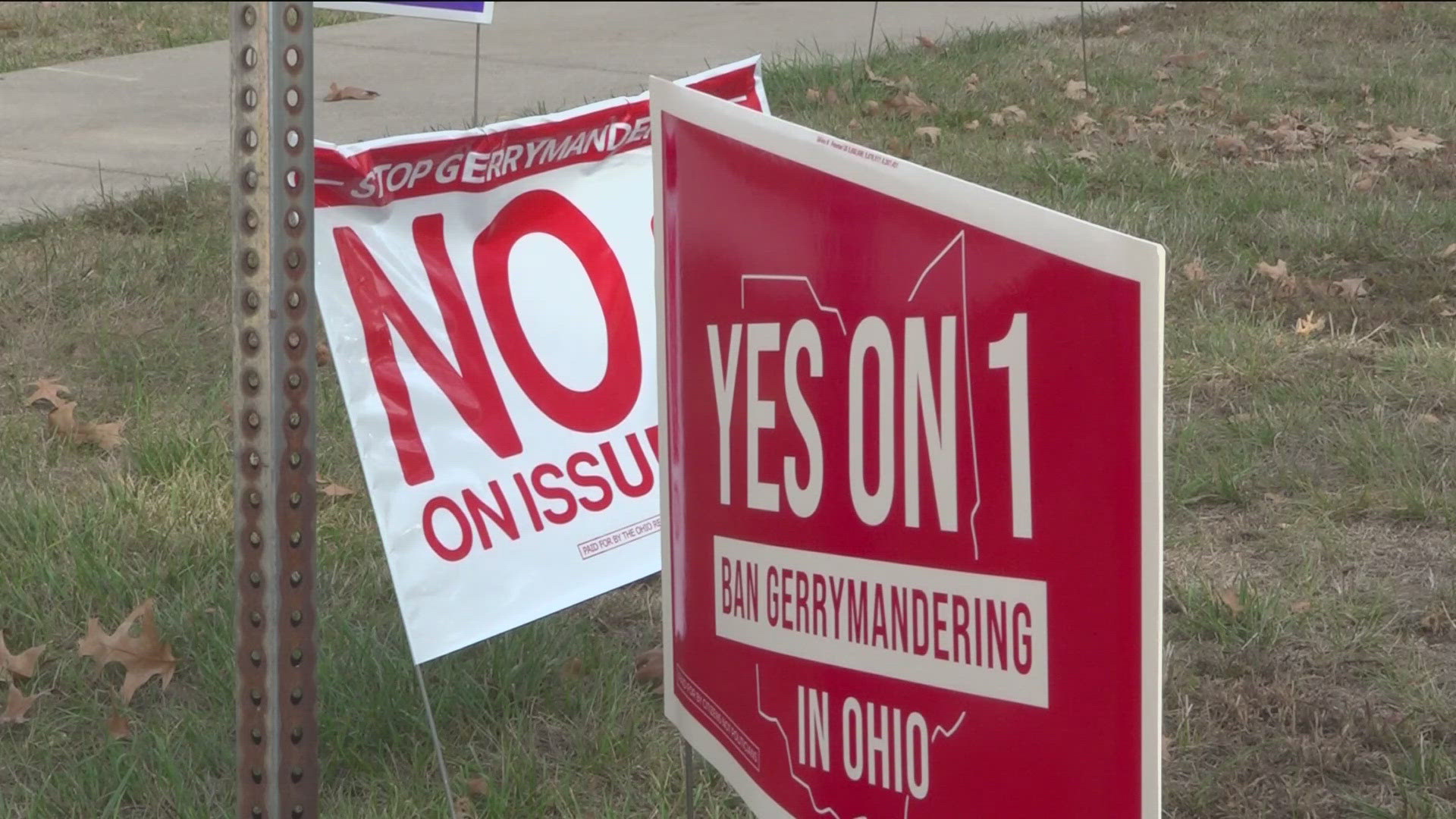TOLEDO, Ohio —
Ohio Issue 1 is asking voters whether or not they want the way congressional and legislative districts are drawn in the state to be changed.
This is not the first time there has been an initiative aimed at tackling gerrymandering on the ballot, but some voters WTOL 11 spoke with, say the language of the ballot item is not so clear.
"I was reading that pretty thoroughly because it's very muddy," said Springfield Township resident Cheryl Addis.
Point Place resident Mark Buford said he felt the ballot language was confusing unless you read about it or heard about it.
Local elected officials have differing opinions on the ballot language.
"There was, in my opinion, a concerted effort to put language together that would mislead voters," said state Sen. Paula Hicks-Hudson (D-Toledo). "I mean, the whole idea that it says we're going to have gerrymandered maps."
But state Rep. Josh Williams (R-Sylvania Township) says "The Supreme Court got it right when it came to the ballot language that specifically said that this would remove our prior amendments that prevented gerrymandering and permanently enshrined gerrymandering in the Ohio constitution."
Currently, districts are drawn by the Ohio Redistricting Commission or the General Assembly. Issue 1 proposes a 15-member commission of citizens to draw the districts.
"You'll have five Democrats, five Republicans, five Independents on the commission," Hicks-Hudson said.
Those 15 people would be chosen by four retired judges.
If the majority of voters vote yes on Issue One, putting the citizen commission in place, Ohio won't be the first state to remove politicians from the drawing process.
Michigan has a 13-member citizen board that has drawn district maps that will go into effect in January. The commission has faced several lawsuits and the maps have been redrawn multiple times.
There are concerns for some that if passed, the districts that would be drawn would be unfair.
"Issue 1 requires the number of districts to be proportionate to how voters voted in the last six years' worth of state-wide elections based on political party affiliation," Williams said.
If the majority of voters vote no on Issue 1, it means Ohio will continue having the seven-politician member commission and the General Assembly draw maps.

